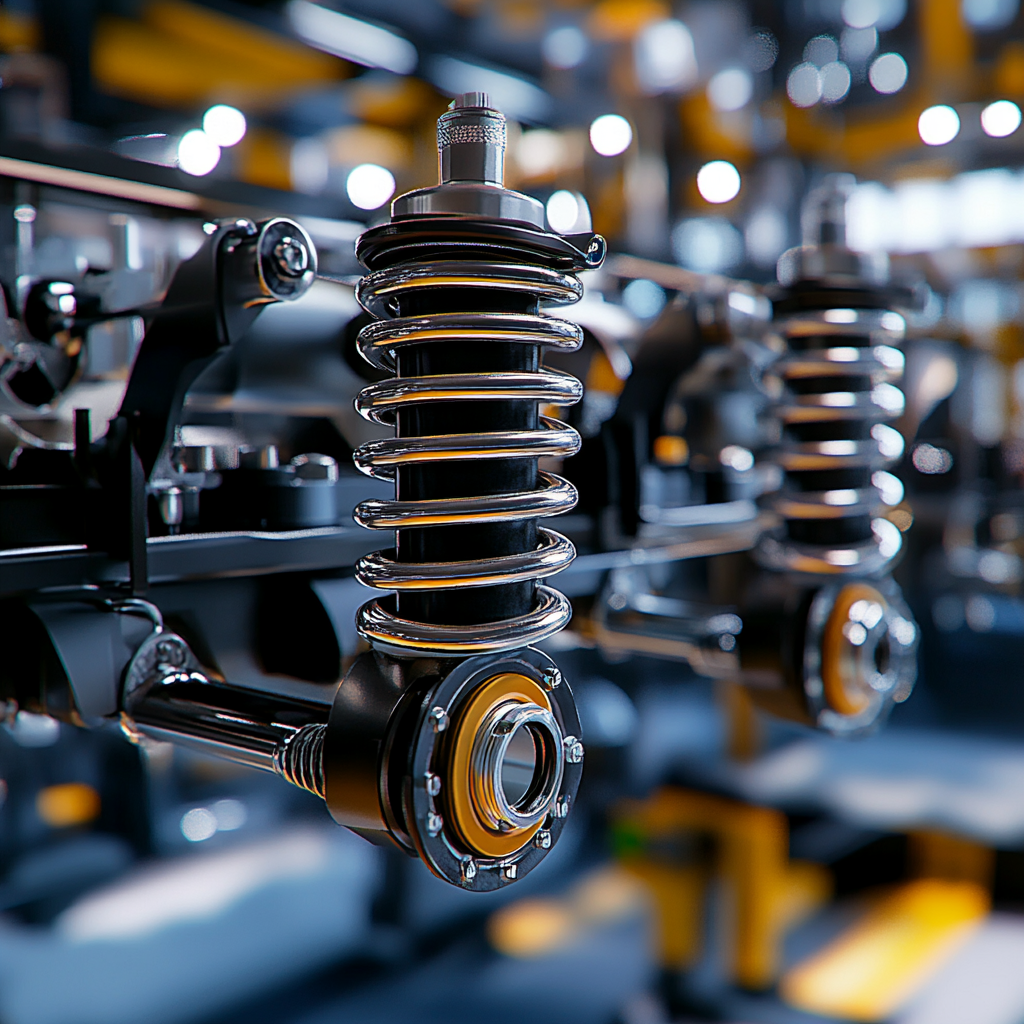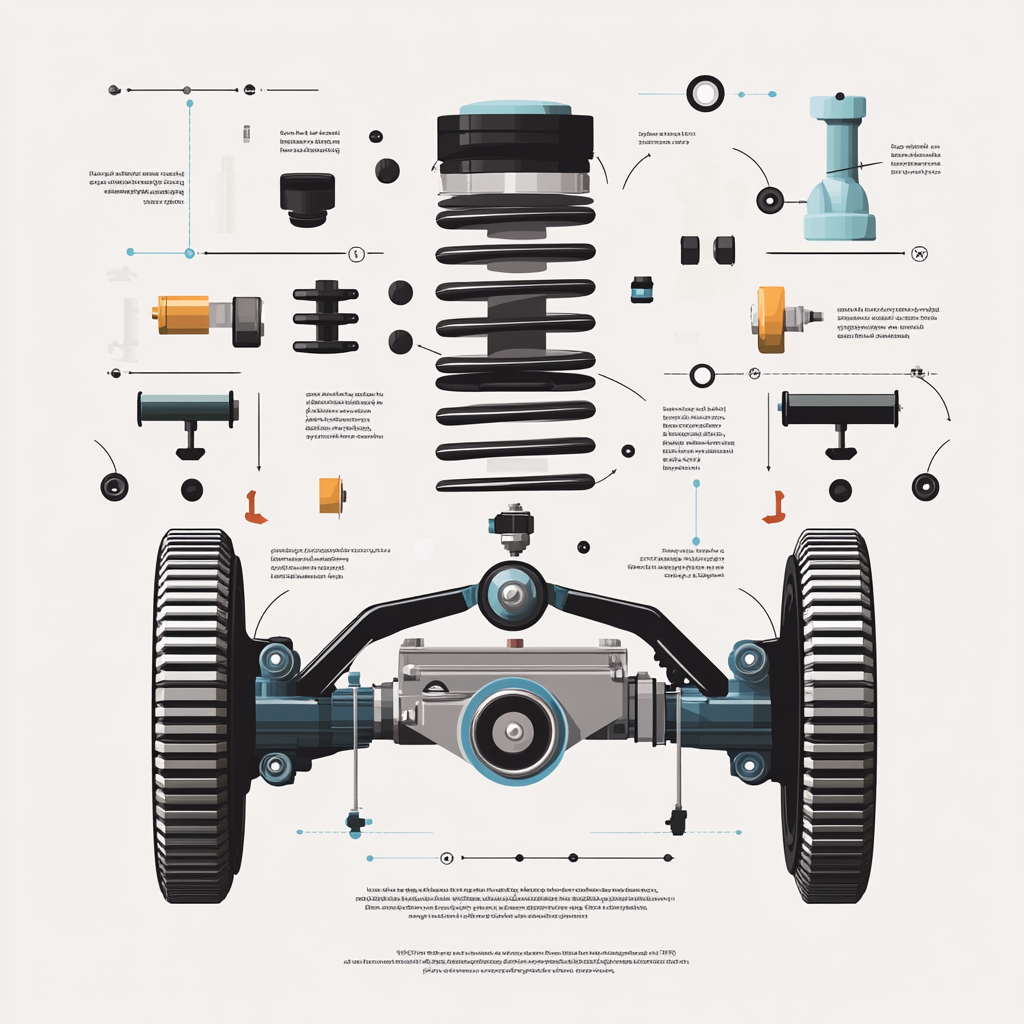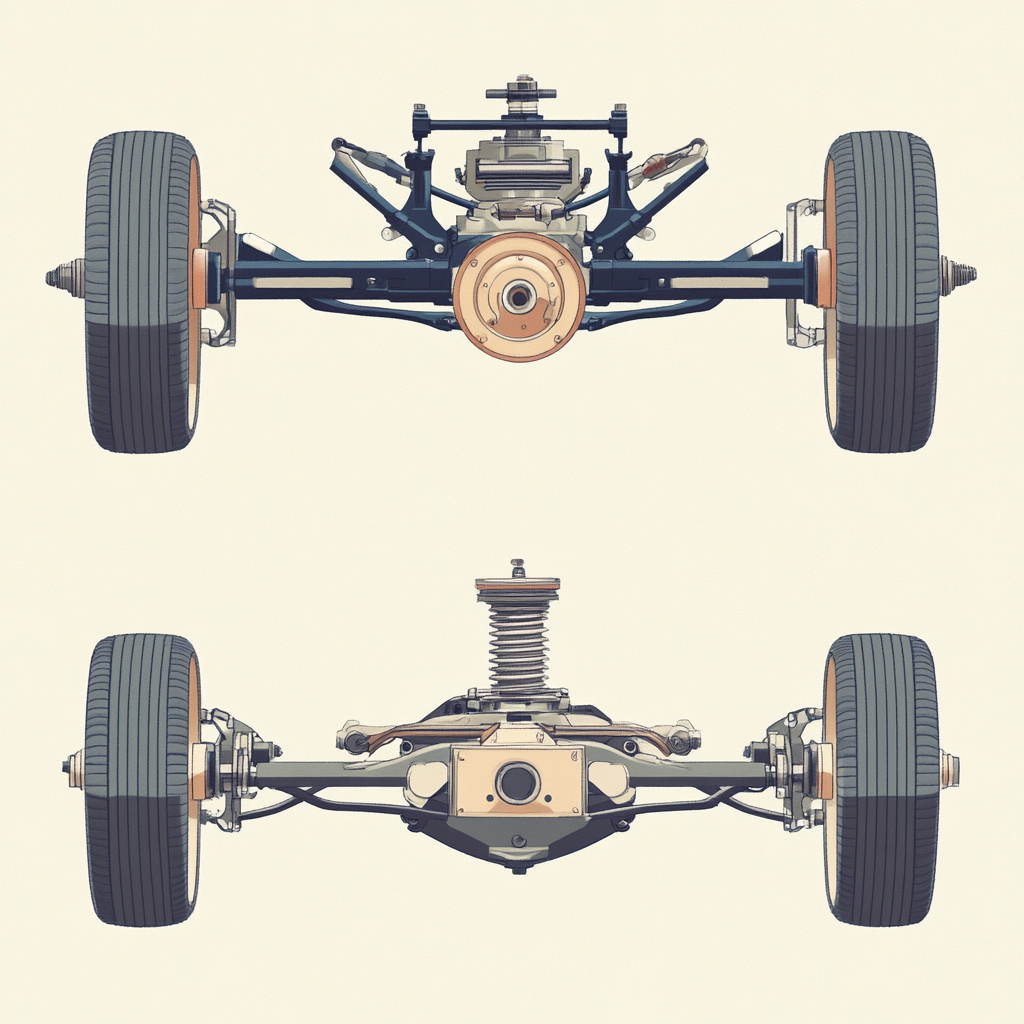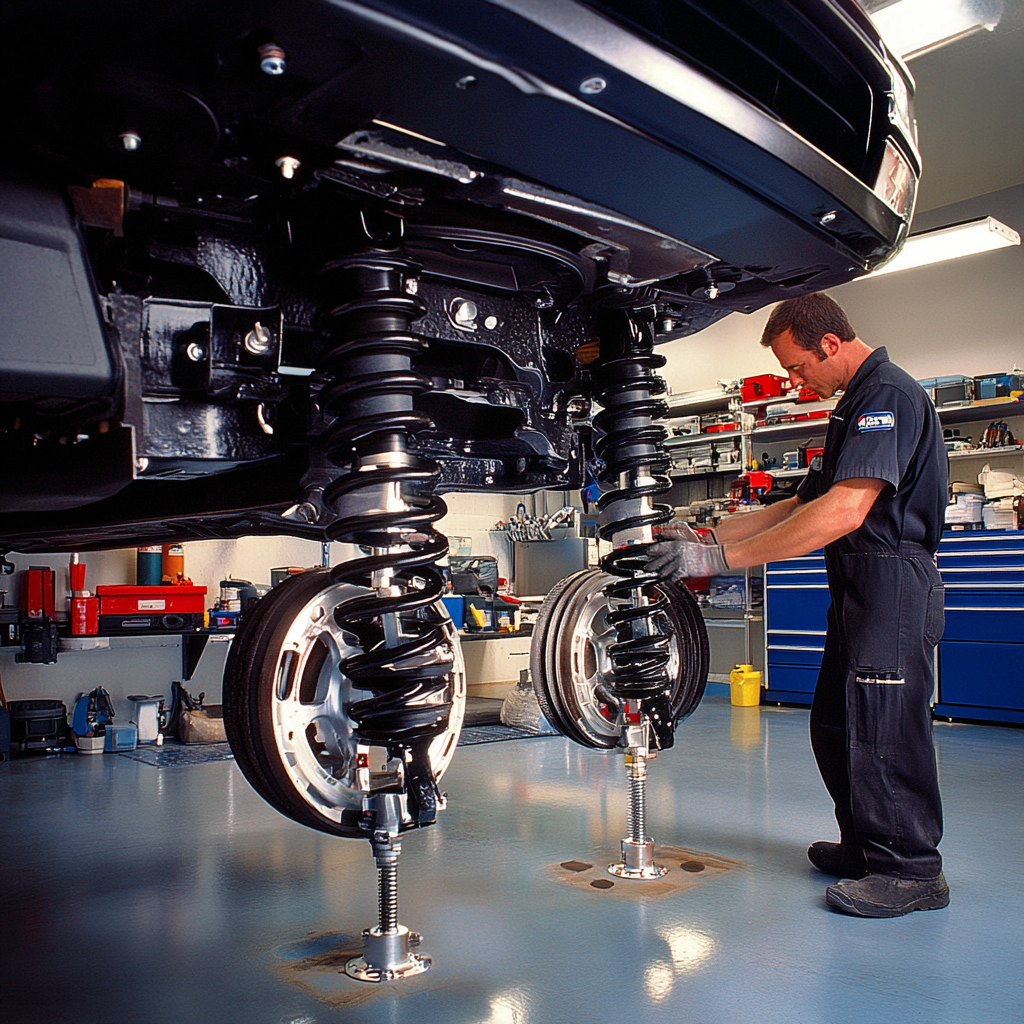
Maintaining your car’s suspension is crucial for ensuring a smooth ride and optimal handling, keeping you safe on the road.But neglecting this suspension system’s maintenance can lead you to costly repairs and which also impact your vehicle’s overall performance. The suspension not only absorbs shocks from the road but also ensures that your car’s tires maintain proper contact with the ground while it’s moving in a normal or harsh condition. Which is vital for handling and braking your vehicles. Frequent suspension system maintenance not only ensures a comfortable ride but also extends the lifespan of your car engine and other components. In this article, we will provide you with the best practices that will keep your car’s suspension in top shape. In this blog we will tell you how you can keep your vehicle running smoothly with a few simple maintenance steps.
Understanding Car Suspension
Car’s suspension system is one of the crucial systems which absorb shocks from the road while you are driving and help you to maintain stability of your vehicle. The suspension system lets the wheels move up and down without shaking the whole car. And these functions help the vehicles handle various road conditions without impacting riders comfort or control.
Components of Car Suspension
Springs:
- Springs act as shock absorbers, supporting the vehicle’s weight and shielding your vehicles from road impacts. Which also helps to keep your car balanced.
Shocks (Shock Absorbers):
- Shock absorbers act as a regulator which controls the movement of the springs, preventing excessive bouncing of the springs while your vehicles carry light weight. Which ensures a stable ride.
Struts:
- Struts are a versatile component that combines the characteristics of both spring and shock absorber, and it provides you both the structural support and shock-absorbing capabilities like spring and shock absorber dose. This component is also cost effective compared to other parts.
Bushings:
- Bushings act as flexible connectors between suspension components, reducing friction and preventing excessive wear and tear between moving parts.

Types of Suspension Systems
Dependent Suspension:
- In this type of suspension system, front wheels or rear wheels are connected with the same axle rigidly. For this connection movement in one wheel affects the other wheel. This type of suspension is commonly found in older vehicles and off-road vehicles.
Independent Suspension:
- In this type of suspension system each wheel is connected separately with the vehicles by the help of separate suspensions. These independent connections offer each wheel to move freely and provide you better handling over your car and a comfortable ride while you are driving in a bumpy condition.Now a days this type of suspension system is usually used in modern vehicles, especially for the front wheels.
Semi-Independent Suspension:
- Semi-independent suspension systems offer a combined characteristics of dependent and independent suspension systems. This type of suspension system is cost effective. And offering a balance between cost and ride quality. This type of semi-independent suspension is usually found in a smaller vehicle.

Signs of Suspension Problems
Common symptoms of worn-out suspension:
While you are driving on the road, your car’s suspension system is essential for a smooth, safe driving experience. Over time, your car’s suspension system loses its characteristics. Recognizing those signs of trouble early can prevent costly repairs and also improve safety on the road. Below are given some common symptoms that indicate your suspension might need attention:
Uneven Tire Wear:
- If you notice that your tires are not wearing evenly or it is wearing one side more compared to the other side, then it’s a sign that your car’s suspension system is not distributing the vehicle’s total weight evenly. This phenomenon will compromise your safety on the road due to its handling issue and also reduce the lifespan of tires and increase the possibility of poor handling.
Vibrations While Driving:
- A worn-out suspension system also responsible for increasing the vibration in the steering wheel or throughout the car, especially while you are driving in a harsh condition. This happens because the shocks or the spring are no longer effective to absorb the impact from the road.
Nose-Diving:
- If you notice your car bowing excessively forward or backward while accelerating or braking, it’s likely due to worn-out shocks or struts. This can also affect your stopping distance and overall driving stability. Which is not suitable while you are driving on the highway or on a busy road.
Reduced Handling and Stability:
- A worn-out suspension can make your car feel unstable, especially when you are turning or driving on bumpy roads. You might notice more trouble while you are controlling the vehicle.

How to Identify Suspension Issues
Visual Inspection:
- Visual inspection is one of the most effective ways to find the worn-out bushings and lacking shocks in your car’s suspension system.
Bounce Test:
- It is one of the easiest and most efficient ways to identify the suspension issue. Push down the front or rear of your car and notice how many times it bounces after your push down. If it bounces more than 3-4 times, then you may need to replace the suspension system.
Listen for Noises:
- By listening to your car noise, you can find most of the problems in your car. If you hear unusual clunking, squeaking, or knocking sounds when driving over bumps, it could be a sign of suspension wear.
Top Tips for Maintaining Your Car’s Suspension

Tip 1: Regularly Inspect Suspension Components
We all know that regular inspection of a car is essential for maintaining its performance in top condition. And at that time try to do a regular visual inspection of your car’s suspension system also. While you are doing a visual inspection of your car’s suspension system please check shocks, struts, springs, control arms, and bushings components. Over time, these components can wear out due to constant use, which leads to reduced performance, discomfort, and safety risks. By doing regular inspection to these parts, you can catch small problems before they become bigger.
Tip 2: Check and Maintain Proper Tire Pressure in Your Vehicle
Proper tire pressure is not only important for the lifespan of your car’s tire but also it increases the performance of your car’s suspension system. Under inflated or over inflated tires can place additional stress on your car’s suspension components, which may reduce the handling ability while you are driving. Which also compromises your safety on the road while you are driving.
When your car’s tire is under inflated at that time it makes more contact with the road surface. Which increases the load on cars engines and also increases the stress in the suspension system. For this reason, fuel consumption also increased, and the wear rate of the engine moving component and suspension component also increased. If your tires are over inflated, they won’t touch the road as much. This makes the ride rougher and puts more stress on the parts that hold up your car. Over time, this can wear out the springs and bushings.
For these above reasons maintaining correct tire pressure is also important for maintaining your suspension system. Because this imbalanced tire can cause vibrations that stress your shocks and struts, reducing their lifespan. Maintaining proper tire inflation ( tire pressure) and balancing wheels also helps your car’s suspension system work more efficiently, resulting in better handling.
Tip 3: Replace Worn Shocks and Struts
Shocks and struts these two components play a critical role in your vehicle’s suspension system by absorbing road impact and ensure a smooth ride while you are driving. They help to control the motion of the springs, preventing excessive bouncing and keeping the tires in contact with the road. Which helps to maintain the stability of your vehicles. Your car’s handling and safety can be significantly compromised without properly functioning shocks and struts.
There are some signs that can indicate that your shocks and struts are worn out. One of them is if your vehicles bounce more than 2-3 times or multiple times after going over a bump, this might be due to your suspension shocks or struts may be worn out. And another common sign is that if your vehicles feel unstable or seem harder to control worn shocks or struts might be to blame.
So many experts recommend that you need to check and replace your vehicles shocks and struts after every 50,000 to 60,000 miles, this can vary based on your driving conditions and habits. Rough roads, potholes, and frequent stop-and-go driving can wear them out faster compared to normal uses. If you drive in harsh conditions, it’s important to inspect them more frequently.
Tip 4: Lubricate Suspension Joints and Bushings
Proper lubrication of your suspension joints, bushings and other moving parts is essential for keeping the suspension system working smoothly and it will also reduce the wear between moving components. Control arms and sway bars depend on bushings and joints for smooth and flexible movement. Over time, bushings and joints can dry out, causing increased friction, squeaking sounds, and accelerated wear. Without proper lubrication, bushings and joints can wear out prematurely, leading to poor handling and increased strain on other suspension components.
Now questions come, when should you lubricate these parts? You should inspect and lubricate these parts at least once a year, or whenever you notice squeaking, stiffness, or signs of wear. Always check your vehicle’s manual for specific maintenance guidelines, as some bushings may require regular greasing while others are sealed and maintenance-free.
Tip 5: Avoid Overloading Your Vehicle
If you continuously overload your car, then it will put a lot of extra stress on your car’s suspension system. This habit can make your suspension system wear out faster then normal uses and even it increases the chance of breaking. Your car’s suspension is built to handle a specific amount of weight. If you overload it, then the shocks, struts, and springs have to work harder than they’re supposed to. This can make your suspension wear out faster, make it less effective, and lead to expensive repairs.
By staying within your vehicle’s load limit, you will protect your vehicles suspension system, improve fuel efficiency, and maintain better handling, ensuring your car performs at its best for longer.
Tip 6: Schedule Regular Professional Inspections
Even though you can do some basic checks on your car’s suspension system by yourself, but it’s still important to have a professional look at it regularly. They are able to find some problems on your vehicles that you might miss. A skilled mechanic can give your suspension a thorough checkup, examining the shocks, struts, and bushings to make sure they’re working correctly. You should have your suspension inspected at least once a year, or more often if you drive on rough roads.
